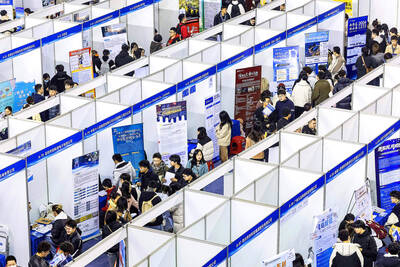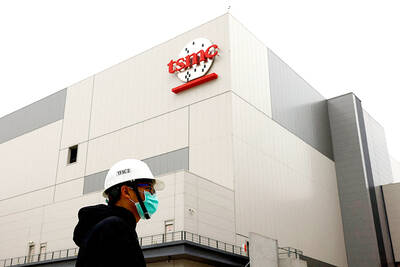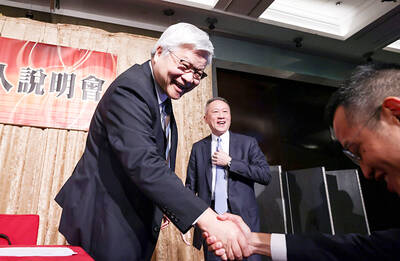China’s services sector last month expanded at the fastest pace in more than a decade as the easing of COVID-19-related lockdown measures revived consumer demand, a private survey showed yesterday, though companies continued to shed jobs.
The Caixin/Markit services Purchasing Managers’ Index (PMI) rose to 58.4, the highest reading since April 2010, from May’s 55.0, pulling further away from the trough hit in February as the COVID-19 lockdown paralyzed the economy.
The 50-mark separates growth from contraction on a monthly basis.
The rebound suggests China’s overall recovery is becoming more balanced and broad-based, as life slowly returns to normal in one of the world’s biggest consumer markets, although analysts believe it would take months for activity to return to pre-crisis levels.
The services sector accounts for about 60 percent of the economy and half of the urban jobs, and includes many small, private firms that had been slower to recover initially than large manufacturers.
Heavy job losses, pay cuts and fears of a second wave of infections have made some consumers cautious about spending and going out again.
“This [latest survey] suggests the services sector’s recovery is gaining traction,” said analysts at Nomura Holdings Inc, which recently raised its forecast for China’s second-quarter GDP growth to 2.6 percent year-on-year from 1.2 percent.
“However, we caution that the recovery momentum could lose some steam in coming months,” they said.
The Caixin survey showed a sub-index for new business received by Chinese services firms rose to 57.3 from 55.8 in May, with the rate of growth accelerating to the fastest since August 2010.
New export business also expanded for the first time since January on firmer foreign demand, in contrast to overseas orders for manufactured goods, which continued to contract as many of China’s trading partners remained in lockdowns.
Services companies were also able to raise their prices slightly, ending a six-month streak of discounting as firms promote sales, while business confidence over the next 12 months strengthened to a three-year high.
However, employment remained stuck in contractionary territory for a fifth consecutive month, with corporate headcounts falling at a faster pace than in May, highlighting the immense pressure facing Chinese policymakers this year as they vow to stabilize the labor market.
“Although businesses were optimistic about the economic outlook, they remained cautious about increasing hiring, with employment in both the manufacturing and services sectors shrinking,” Caixin Insight Group (財新智庫) said in a statement.
“Addressing the employment problem requires not only macro policies to further promote work resumption, but also more targeted relief measures introduced by governments to tide companies over,” it said.
Caixin’s composite manufacturing and services PMI, also released on Wednesday, picked up to 55.7 last month from 54.5 in May.

Stephen Garrett, a 27-year-old graduate student, always thought he would study in China, but first the country’s restrictive COVID-19 policies made it nearly impossible and now he has other concerns. The cost is one deterrent, but Garrett is more worried about restrictions on academic freedom and the personal risk of being stranded in China. He is not alone. Only about 700 American students are studying at Chinese universities, down from a peak of nearly 25,000 a decade ago, while there are nearly 300,000 Chinese students at US schools. Some young Americans are discouraged from investing their time in China by what they see

Taiwan Semiconductor Manufacturing Co (TSMC, 台積電), the world’s largest contract chipmaker, yesterday reported record sales for the first quarter, which analysts attributed to solid demand for emerging technologies. Consolidated revenue totaled NT$592.64 billion (US$18.51 billion) in the January-to-March period, up 16.5 percent from a year earlier, but down 5.26 percent from the previous quarter, TSMC said in a statement. The first-quarter revenue beat analysts’ average projection of NT$579.5 billion, Bloomberg News reported. That performance lends weight to expectations that the world’s most valuable chipmaker would return to solid growth this year after weathering a post-COVID-19-pandemic cratering of smartphone and computer sales. TSMC is budgeting

MAJOR DROP: CEO Tim Cook, who is visiting Hanoi, pledged the firm was committed to Vietnam after its smartphone shipments declined 9.6% annually in the first quarter Apple Inc yesterday said it would increase spending on suppliers in Vietnam, a key production hub, as CEO Tim Cook arrived in the country for a two-day visit. The iPhone maker announced the news in a statement on its Web site, but gave no details of how much it would spend or where the money would go. Cook is expected to meet programmers, content creators and students during his visit, online newspaper VnExpress reported. The visit comes as US President Joe Biden’s administration seeks to ramp up Vietnam’s role in the global tech supply chain to reduce the US’ dependence on China. Images on

US CONSCULTANT: The US Department of Commerce’s Ursula Burns is a rarely seen US government consultant to be put forward to sit on the board, nominated as an independent director Taiwan Semiconductor Manufacturing Co (TSMC, 台積電), the world’s largest contract chipmaker, yesterday nominated 10 candidates for its new board of directors, including Ursula Burns from the US Department of Commerce. It is rare that TSMC has nominated a US government consultant to sit on its board. Burns was nominated as one of seven independent directors. She is vice chair of the department’s Advisory Council on Supply Chain Competitiveness. Burns is to stand for election at TSMC’s annual shareholders’ meeting on June 4 along with the rest of the candidates. TSMC chairman Mark Liu (劉德音) was not on the list after in December last